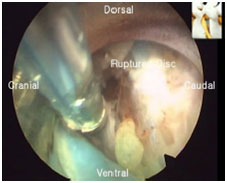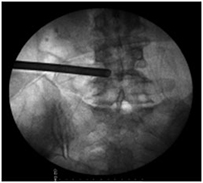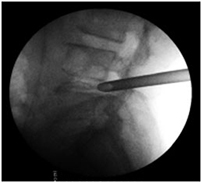Endoscopic Spine Surgery
Endoscopy is an ultra minimally invasive form of spine surgery. By combining tiny incisions (usually less than 1 cm) with high-definition endoscopic visualisation, a whole range of procedures can be performed, minimising the amount of disruption to normal tissues and often without the need for general anaesthesia. Endoscopic spine surgery encompasses a number of different procedures, including discectomy, decompression and even fusion surgeries.
Indications
The indications for endoscopic spine surgery are similar to those for other lumbar spine operations, including disc herniation, stenosis and spondylolisthesis (or slippage of one bone on another, caused by instability). The reasons for surgery include severe or worsening leg or back pain despite physical therapy, medications and injections, or symptoms of neurological compromise, including weakness, numbness and tingling.
Procedure
Endoscopic spine surgery is usually done with the patient lying on their stomach. A tiny incision (usually less than 1 cm) is made in the back, through which the desired level is precisely targeted using a series of ultra low profile dilators with minimal disruption of normal tissues. Through a high-definition endoscope, a number of specialised endoscopic instruments are used to remove overgrown bone, ligament and disc, thereby taking pressure off the nerves.
If fusion is needed, a small expandable cage filled with bone can be inserted into the disc space through the same tiny incision. Screws and rods are then placed to secure everything in place, also in a minimally invasive fashion.
Often, surgery can be performed with the patient awake, i.e. not needing general anaesthetic. This allows real-time monitoring of the patient’s symptoms, in addition to eliminating the potential side effects of general anaesthesia.
Postoperative instructions
Every patient’s recovery is different. However, patients can often go home on the same day (or very next day) after endoscopic spine surgery. Walking can usually resume right away, and driving within a week or two. Timeframe for return to work depends on the type of work you do. Most people should wait around 6 weeks before doing more strenuous activity to give the body enough time to heal.
Adhering to the post-operative instructions provided by your surgeon is important to promote healing and reduce possible complications.
Advantages
- Tiny incision (< 1 cm)
- Minimal disruption to normal tissues
- Surgery can be done without general anaesthetic
- Less pain after surgery
- Less requirement for strong pain-killers after surgery
- Lower rates of infection
- Shorter stay in hospital
- Faster recovery time





